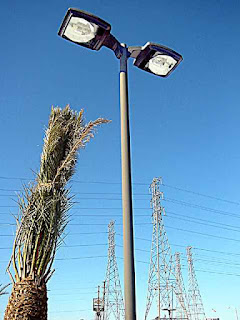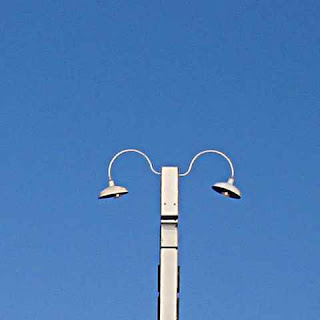After a few seconds I realized this was no ordinary Rhapsody in Blue. Along with the "classical" bits it contained actual improvisation. And I was not listening to the classical radio station. This was being broadcast on the (one remaining) jazz station - which normally never plays Rhapsody in Blue (because they don't play classical music.)

This rhapsody had soloists soloing (yep, multiple soloists along with the pianist including a big part for the lowly banjo). The soloists were making things up, they were being creative and individual. The familiar segues were different. There were new fascinating harmonies in the piano part; chord substitution is not a classical music talent (any more). This pianist, whoever it was, was a master of twisting the familiar into the fabulous.
In between all this was a regular orchestra playing the familiar bits which sounded, well, familiar.
It was still going strong when I reached our driveway. I sat and listened, enthralled, until it was over. Turned out to be a Jazz from Lincoln Center broadcast. The announcer (some guy named Winston or Wilton) said the pianist was Marcus Roberts. I marched inside and immediately ordered the album, Portraits in Blue by Marcus Roberts.. Here's more info.

When the album arrived I was surprised to learn that there were two sets of musicians; the improvising musicians and the classical musicians were not the same. The performance was credited to "Members of the Orchestra of St. Lukes and the Lincoln Center Jazz Orchestra". I had naively assumed that there are plenty of musicians who could play both halves of this piece, the classical and improvisation. I guess not.
The music is a mix of jazz styles - the liner notes mention Errol Gardner and Thelonius Monk. There's a Mingus-like section. The final cadenza ends with a vamp right out of Leslie Gore. I guffawed when I heard that. Now, dozens of listens later and knowing full well that it's about to happen, I still laugh.

This arrangement of the Rhapsody gets various live performances.
Here's an excerpt from a recent review by Harvey Steiman in Aspen Times (about the Aspen Music Festival's survey of the relationship between jazz and classical music):
In a 1998 performance of “Rhapsody in Blue” here in Aspen, the jazz pianist Marcus Roberts played Gershwin’s music as if it were real jazz and extended the cadenzas into fullscale jazz solos. That was impressive. And rare.And Marcus Roberts performed the Rhapsody in Blue last week at the Proms. Here are some notes. And here are some reviews.
In a BBC interview before the broadcast Roberts said:
It's been wonderful pretty much every time we've done it ... because people know the piece, so when you improvise on it they can follow what you're doing, even if it's fairly abstract, even if it's fairly spontaneous.

The live performance was less interesting to me than the recording since many of the solos reverted back to the orchestra players who played them really "straight". Well, it was a run-out concert. And of course the recording represents the best of several takes. I'd like to hear the Lincoln Center recording again - that seemed pretty wild.
It occurred to me that if many (or even a few) performances of classical music had this level of creativity in them - of even a small fraction of the creativity in this performance - I would not think of it as such a dead art form.
Other music in my current listening rotation (meaning on my iPod) have similar creativity within a classical framework:
- the Diabelli Variations by Uri Caine (Mixed Meters on Uri Caine's Goldberg Variations)
- the Art of Fuguing, Bach arranged by William Malloch
- Mozart in Egypt (Egyptian composers re-compose W.A.)
- Some Combinations of Fingers and Passion - piano improvisations by Sergei Kuryohkin who displays an abundant classical technique
However, this is stuff you'll need to think about while you listen. Afterwards too. And of course a grounding in the classics will help but it's not enough. Not nearly enough. If you already have fixed thoughts about the great works of music, then you'll need to think new thoughts in order to listen to these pieces. That, it seems to me, is what makes a living art form.
Clazzical Jassical Tags: George Gershwin. . . Rhapsody in Blue. . . Marcus Roberts. . . classical music. . . jazz. . . Proms
2 comments :
Nice to have a mention of William Malloch -- his programs on KPFK were a superb education in late romantic and early 20th century European music and its performance history (I wish someone would put a copy of his program on Stravinsky's borrowings from Woody Herman for the Ebony Concerto online).
My favorite Bill Malloch moment was a show on the last movement of Mahler's 7th - this was during my Mahler years. Malloch's thesis was that no conductor chose the correct tempo relationships as indicated in the score. I listened out of one ear. "yeah, yeah, okay, whatever".
Then he played a composite recording he had created with these tempo relationships and I was blown away. I still regret not having taped that show.
Later I had one brief chance to meet the man at KPFK - and I told him how impressed I had been with that particular show. I asked if he'd rebroadcast it.
Of course, given the politics of KPFK from that point on, it was not to be.
I bet most of his programs are slowly decaying in the Pacifica Archives even yet.
Post a Comment